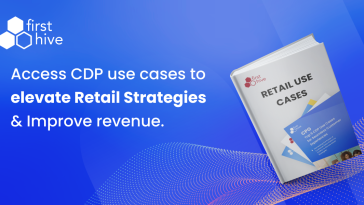
Narrowcasting refers to the targeted segmentation of media dissemination. It involves targeting media messages at specific segments of the public defined by values, preferences, or demographic attributes.
Narrowcasting, in contrast to broadcasting, implies certain conditions:
- Disseminate your campaign to different demographics, tweaking each of those campaign to comply better with each one of those demographics values, interests, preferences, etc.
- Make sure campaign is only available to specific groups of people, this can be done by the sender who chooses who is best suited to receive said campaign or by the receiver that chooses which campaign he wishes to receive.
- High levels of relevance of campaign to the receiver, by using techniques to select to whom to send plus combined with the possibility the receiver can also choose what to get, makes for much more relevant campaign overall.
- When referring to narrowcasting, the first thing one may ask is ―Why? How accepting would people be of narrowcasting mechanisms on their channels? Is narrowcasting enough to guarantee total privacy and security on these social networks? In order to understand these issues, one has to understand the differences between narrowcasting and broadcasting.
Venn diagram Interface:
In below example of this interface with the overlapping of the facebook friend list with two other networks (let’s say twitter and whatsapp – Conglomi and Brown) in which for each subset, participants could select ―allow or ―deny from a drop-down box, which caused the selected subset and all the nested subsets to change permissions. The color of each subset also changed to reflect the effective permissions: red for deny, green for allow.

Types of online narrowcasting
In order to develop narrowcasting ideas for the current social networks available, it is important to explore which techniques exist on the internet on different kinds of websites (even those that have little or no relevance for social networks but are still means of online narrowcasting). By doing so, we can better understand these current mechanisms that are in place on the internet and see which would adapt themselves better to social networking sites. So here are some existing narrowcasting techniques.
Email campaign. Opt-in subscription campaign are a terrific way to expand reach and are particularly useful if you want to zero in and expand on topics that currently explored on your blog campaign. They are a good add-on for all retail or service businesses and can be used to blast out product updates/special online offers as well.
Premium Content. Provide excerpts of your content in the broadcast channel in order to get people to engage our premium content in the narrowcast channel.
Members-Only Networks. Private members-only forums or social networks are a useful way for businesses to leverage the brand interest of existing and potential customers. By providing a channel for readers/customers to provide feedback, you are allowing them to talk about your brand. This added activity and interaction has the benefit of developing visitor loyalty.
Social Media Mullets. The Mullet is a social media marketing strategy which involves the creation of targeted content away from your main channels, in order to appeal to specific social media websites or communities. Your regular users are not able to access this content as it will only be narrowcaster to social media community.
RSS-Only campaign. This involves the production of campaign only viewable by users who subscribe to your web feed. This is useful if you want to encourage subscriptions and it can be combined with the mullet for extra promotional strength.
User-Generated News. Social news elements can be added to your product/website to provide relevant news for the users. Visitors can participate in the organization of content by voting for news which they find interesting. User generated news and individualized customization will also allow you to promote site as a resource hub.
Narrowcasting based on categories:
There is a way to automatically separate people into different groups, that have something in common, of people inside the users network. This way marketers would not have the hassle to actually create his owns lists and also their lists dynamically update themselves whenever someone changes something on their profile, a friend leaves Facebook or you add a new friend. This lead to a category-driven filter kind of tool with its categories being: Age (sorted by subcategories of decades: 10-20, 21-30, 31-40, 4150, 51-60), Current Location (country where the user currently is), Gender (male and female separation of friends), Relationships (contains the family and the girlfriend/boyfriend subcategories), Home Country (country of origin of the user) and finally Relationship Status (sorted by: Single, Married and In a relationship. Other statuses were disregarded as they were deemed not important). There are many groups can be created using Likes, Dislikes, Feedback etc.
Summary:
Narrowcasting means to share information or content directly to a targeted and select audience instead of spamming.
High attention value
Your visitors will automatically look at the screens where the cast is screened. This ensures you that your message will get across in a forest of posters, POS etc.
Be relevant
With narrowcasting it is very easy to make changes to your message. This way you can keep your message up to date as it will be screened immediately.
Well aimed message
As mentioned, you can aim your message very directly. Depending on the time, place and date you can cast your specific message. This way your message is more relevant and will be read with more attention.








